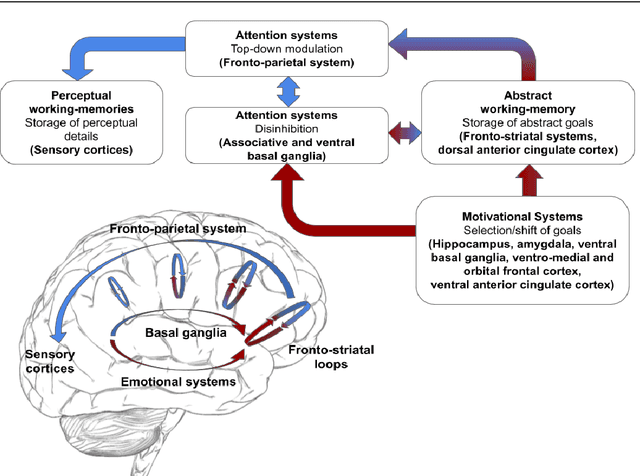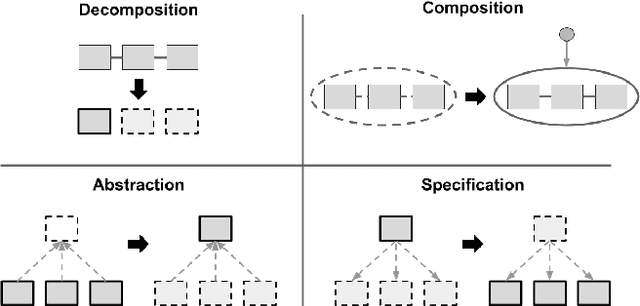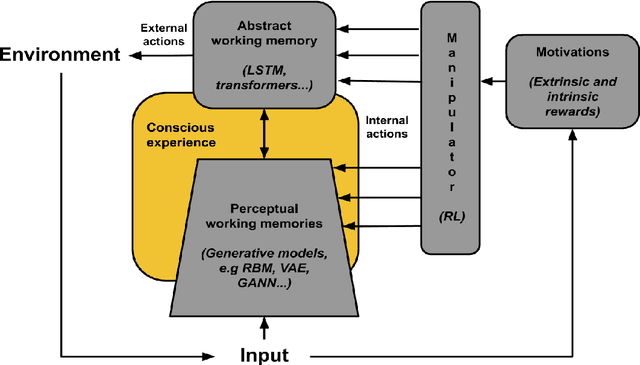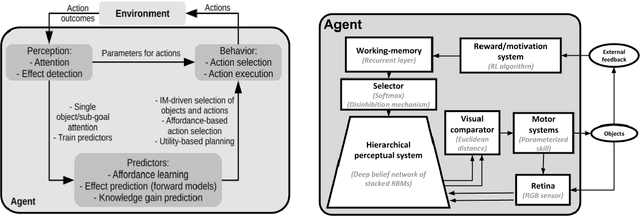Representation Internal-Manipulation (RIM): A Neuro-Inspired Computational Theory of Consciousness
Paper and Code
Dec 31, 2019



Many theories, based on neuroscientific and psychological empirical evidence and on computational concepts, have been elaborated to explain the emergence of consciousness in the central nervous system. These theories propose key fundamental mechanisms to explain consciousness, but they only partially connect such mechanisms to the possible functional and adaptive role of consciousness. Recently, some cognitive and neuroscientific models try to solve this gap by linking consciousness to various aspects of goal-directed behaviour, the pivotal cognitive process that allows mammals to flexibly act in challenging environments. Here we propose the Representation Internal-Manipulation (RIM) theory of consciousness, a theory that links the main elements of consciousness theories to components and functions of goal-directed behaviour, ascribing a central role for consciousness to the goal-directed manipulation of internal representations. This manipulation relies on four specific computational operations to perform the flexible internal adaptation of all key elements of goal-directed computation, from the representations of objects to those of goals, actions, and plans. Finally, we propose the concept of `manipulation agency' relating the sense of agency to the internal manipulation of representations. This allows us to propose that the subjective experience of consciousness is associated to the human capacity to generate and control a simulated internal reality that is vividly perceived and felt through the same perceptual and emotional mechanisms used to tackle the external world.
 Add to Chrome
Add to Chrome Add to Firefox
Add to Firefox Add to Edge
Add to Edge